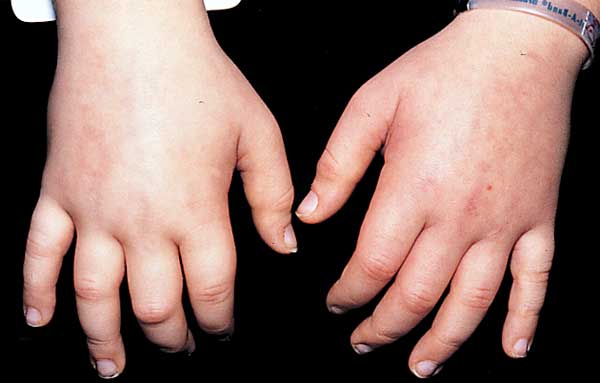Genetically Modified Organisms – Pros, Cons, Examples, Benefits
Genetically Modified Organisms Definition
Genetically Modified Organism can also be called as biotech foods or Genetically Engineered Organism which deals with natural agricultural products that has a genetic material altered through the use of the so called genetic engineering techniques. These agricultural products or plants are modified in the laboratory to be able to achieve enhancement of the traits like improvement of the content base on nutrition aspect or increasing the resistance against herbicides.

What are genetically modified organisms?
This is a scientific breakthrough which allows science coming from one DNA species to be shared by another species. Hence, it will create a brand new combination which does not recently appear naturally. It is commonly used in agriculture products but has been also used in pets for pet breeding procedures. It is the scientific manipulation of the genes of the agricultural or animal product. Basically this kind of scientific breakthrough brought about speculations about its being safe, advantages and disadvantages.
Genetically Modified Organisms History
Historically speaking genetically modified organism dates way back to the prehistoric times where the natural plant foods are manipulated via the usage of fermentation and yeast. They were then known as hybrids plants which were naturally produced via the breeding between the varieties of plants combined.
It was the biologist named Gregor Mendol who was the one who first establish the paper which deals with the explanation of recessive and dominant alleles could be able to give the traits produced that could be genetically passed on to its offspring. These were known before as plant breeding. Aside from Gregor Mendol, Charles Darwin also has given a contribution by his theory of natural selection which connotes those animals and plants having strong traits are the ones who will pass it on to its next generation. These theories are the main point of genetically modified organisms.
Genetically Modified Organisms Pros and Cons
Genetically Modified Organism is not at all perfect. It has its pros and cons which we will be tackling as we go along.
PROS
1. Protects the environment
According to studies, the increase usage of Genetically Modified Organisms in both animals and crops leads to lesser tools, time, chemical usage and aids in the reduction of the pollution which is found in the environment as well as erosion of the soil and greenhouse emission of gases.
2. Nutritious foods increases
The main aim of Genetically Modified Organisms which is used in crops and animals is that it is geared to a more nutritious content in terms of vitamin and mineral aspect. It does not only enhance nutrition and keeps one healthy but also it aids in the battle against malnutrition.
3. Resistance in insects
Another pro in genetically modified organism usage is that it is modified scientifically in the laboratory to make it resistant to bad insect pests without harming the humans.
CONS
1. Genetic transfer
The negative aspect when using genetically modified organism is that it may escape into wild weed population which will lead to the production of super weeds which can’t be killed via herbicides.
2. Allergic reactions
There is a risk to persons for it can present with significant allergy which leads to new allergic reactions since through genetically modified organisms is a combination of non-indigenous proteins.
3. Antibiotic efficacy is decreased
One negative thing about genetically modified organisms is that it does not have an antibiotic feature which making the person consuming it to be prone to viral, bacteria or diseases in general.
Genetically Modified Organisms Examples
As we speak, there are other persons or groups who have actually used genetically modified organisms in both crops and animals the following are some of the examples of genetically modified organisms:
Sweet corn – One type of sweet corn which is genetically modified organism is Bt-corn which is lethal to insects but safe on humans.
Soy – A high percentage of soy in the United States alone uses genetically modified organism as a livestock feed and is mixed with sauces, cereals or chocolates.
Papayas– Papayas are another example which is genetically modified in fighting virus that can possibly kill or infect quickly the crops.
Tomatoes – Tomatoes which are genetically modified which is long lasting and were made available to the consumers as early as 1994. It is aimed to remain fresh and firm for a long possible time.
Golden rice – Genetically modified rice called golden rice consists of high percent of beta carotene which eventually is converted to vitamin A.
Sheep (dolly) – It is the most famous genetically modified animal. It is also associated in cloning.
Genetically Modified Organisms Benefits
When you are opting to use genetically modified organism, the following are benefits:
- Economically friendly since it does not uses pesticides
- Profitability since it does not need pesticides and increase yields in crops
- More nutritious and lesser starvation for it provides a higher nutritional content
- Affordable to the consumers since it has lower maintenance costs and higher yielding outcome
- Resistance to diseases for it is high in nutritional content
- Tolerance to salinity and drought which is a big plus in the agricultural aspect
- Chemical resistance which not affects the genetically modified product
Genetically Modified Organisms Disadvantages
Meanwhile the disadvantage behind the use of genetically modified organisms in both crops and animals are as follows:
- Different taste than it normally does since it is modified scientifically
- Harms the health such as new allergic reactions may be present
- Ethical issue for some will say that you have no power to play God and alter genes of plants and animals
- Economical problem for it has a high potential replacing crops that are standards and those farmers who can’t afford to use GMO will suffer economically in the market
